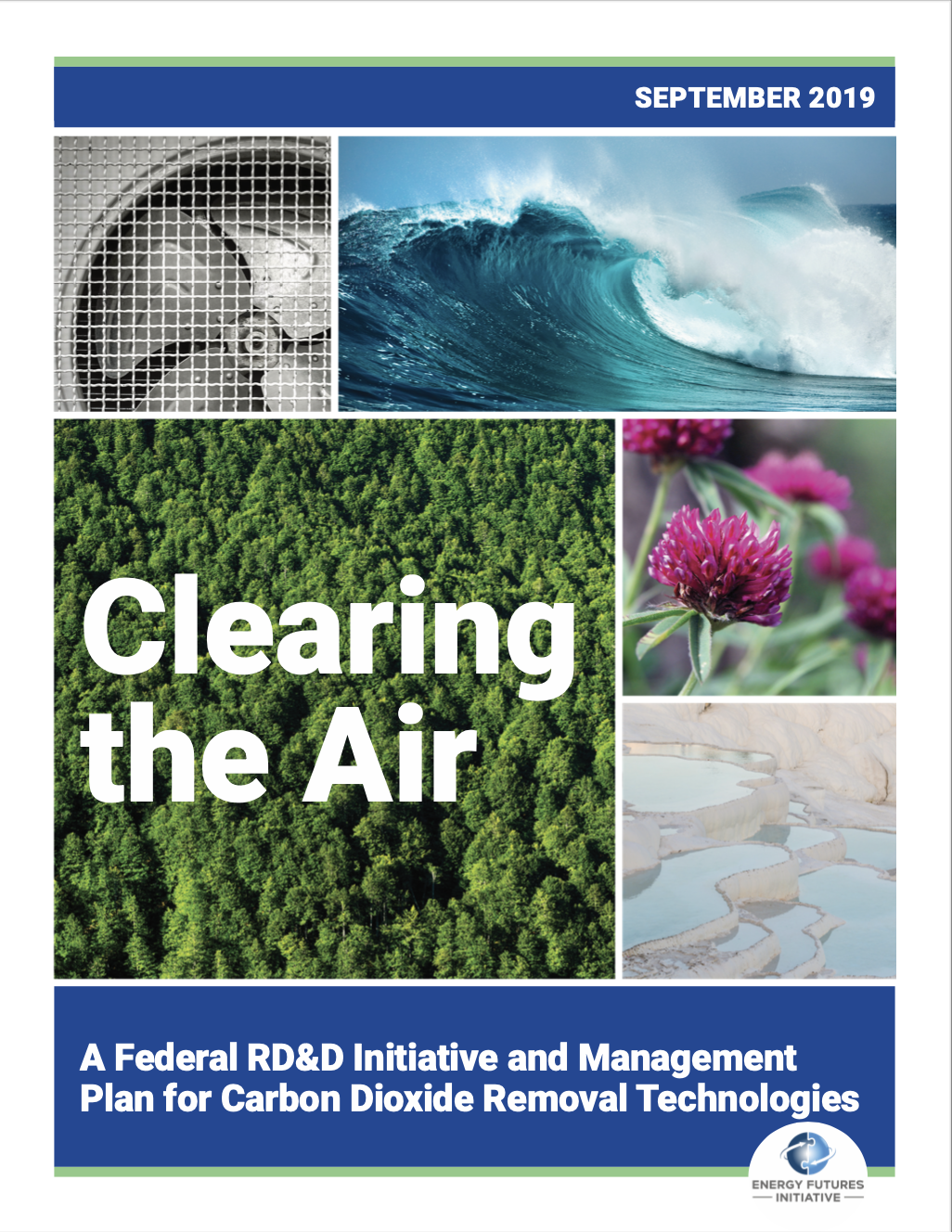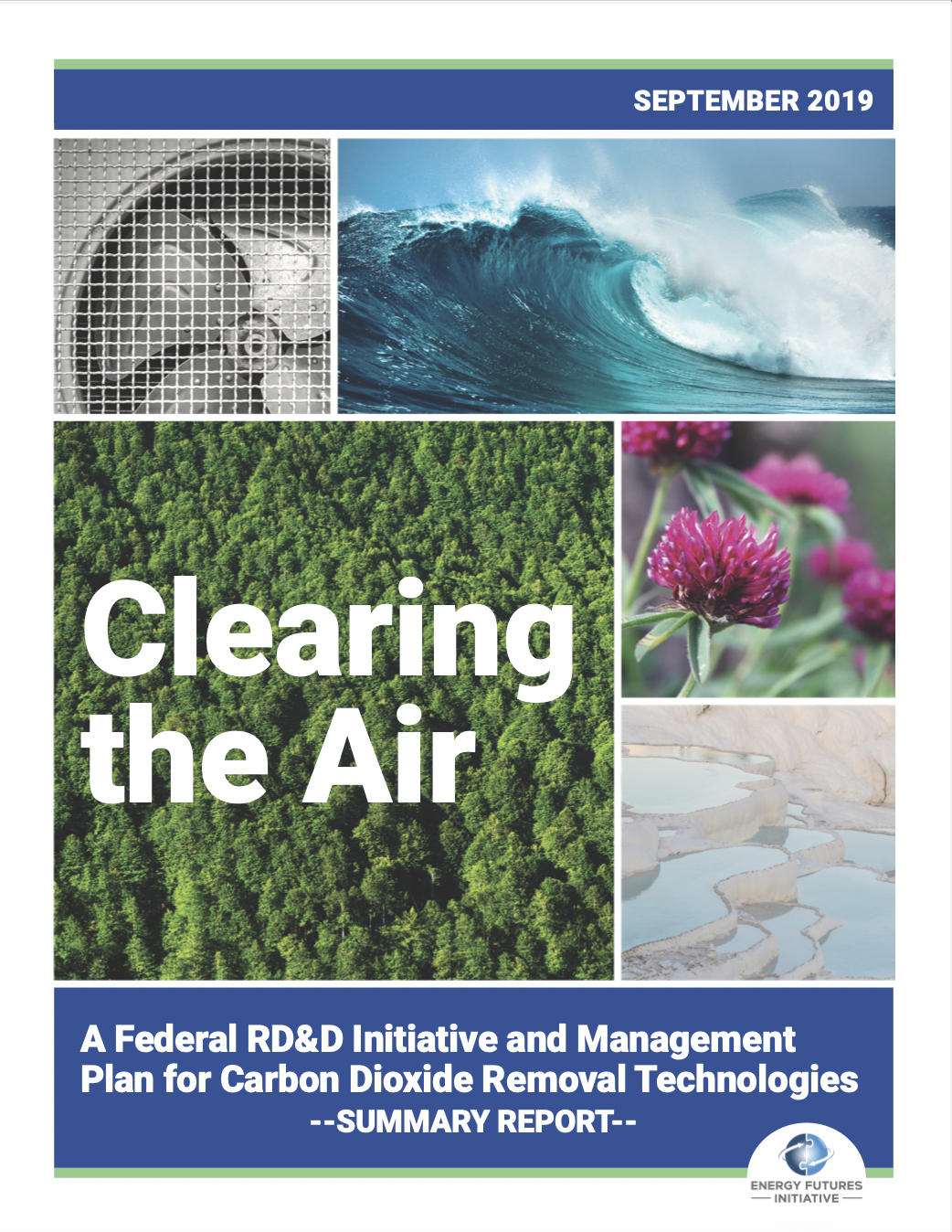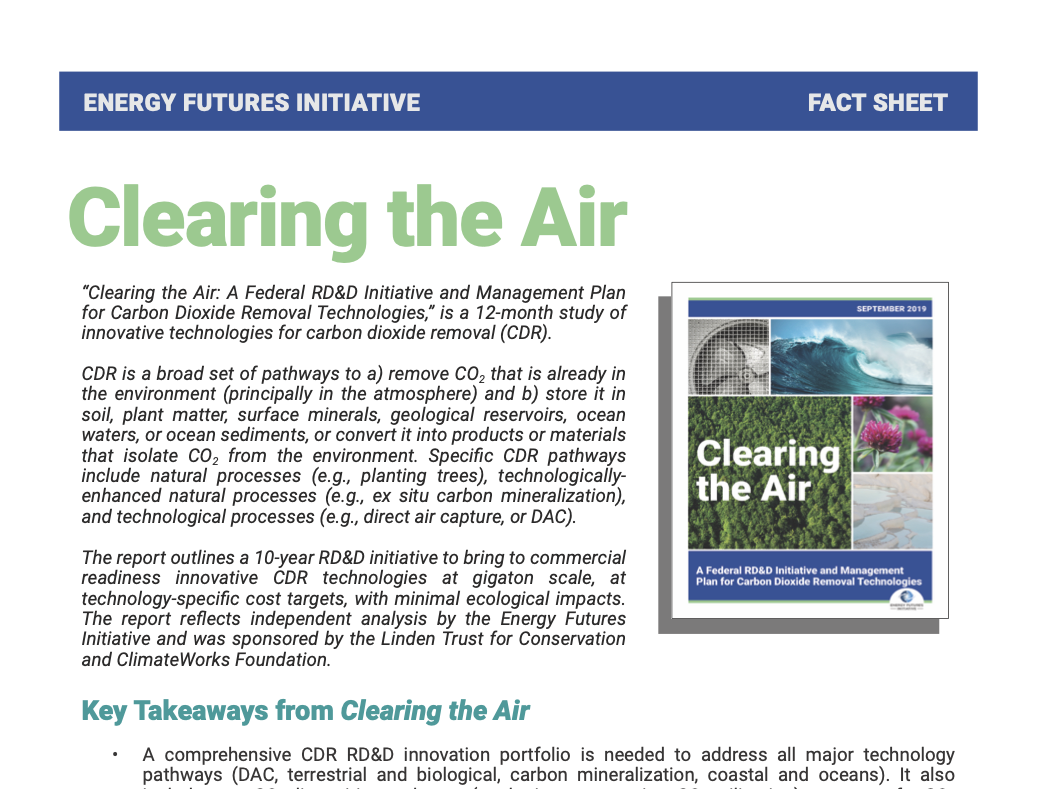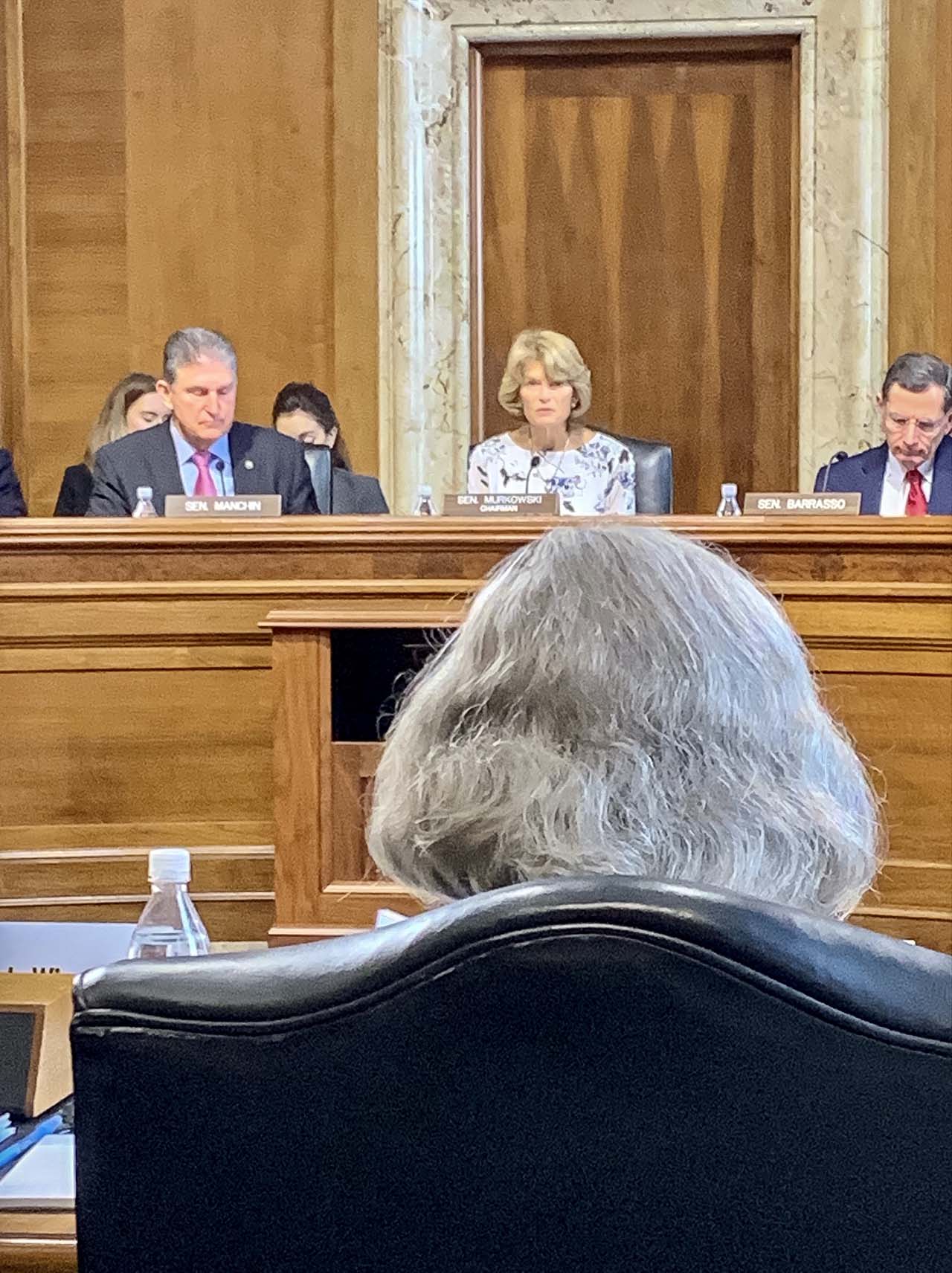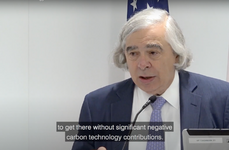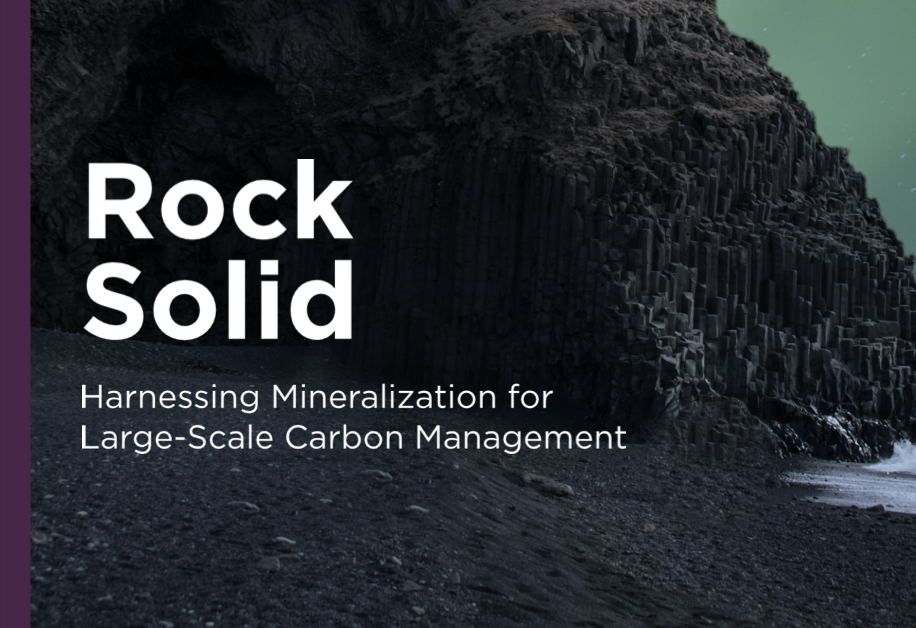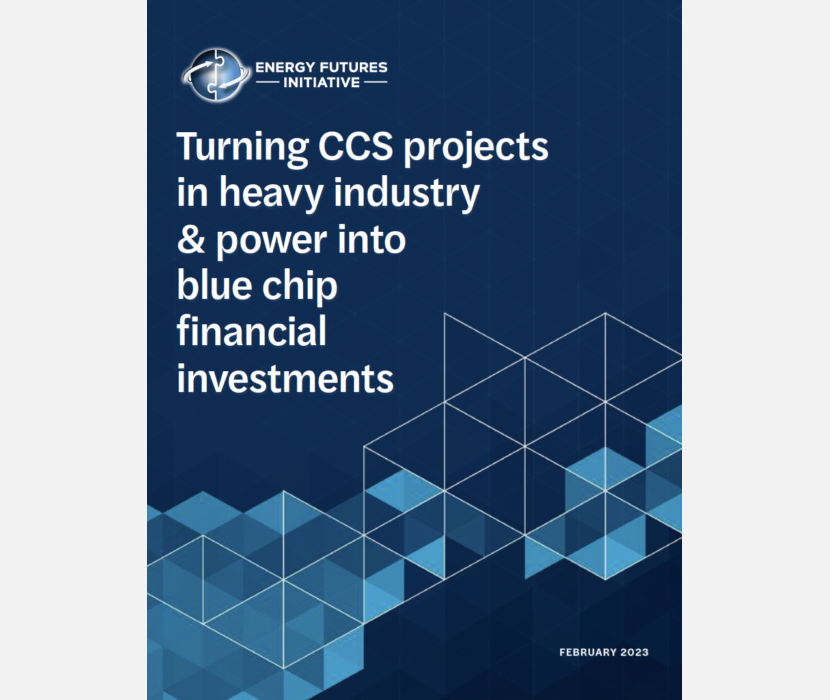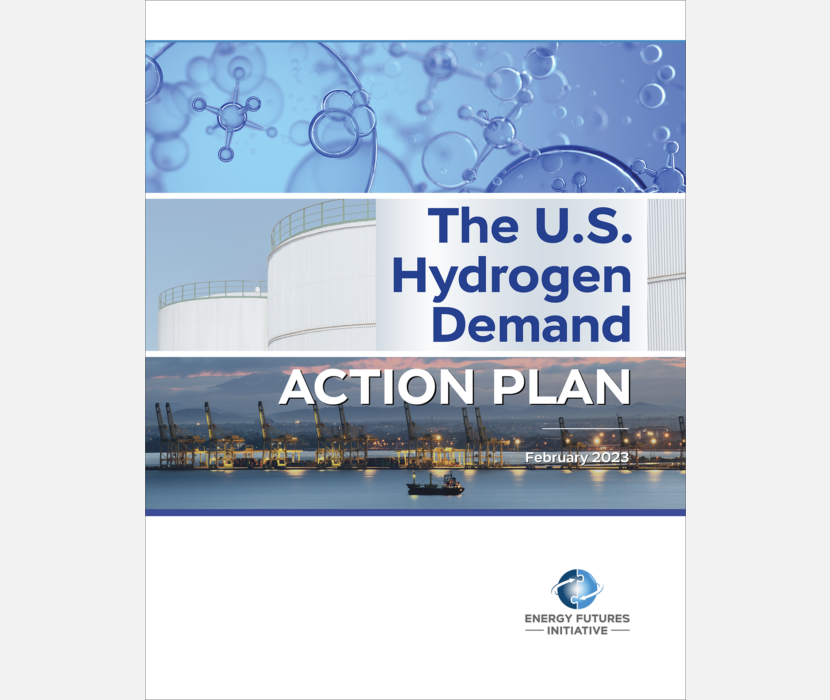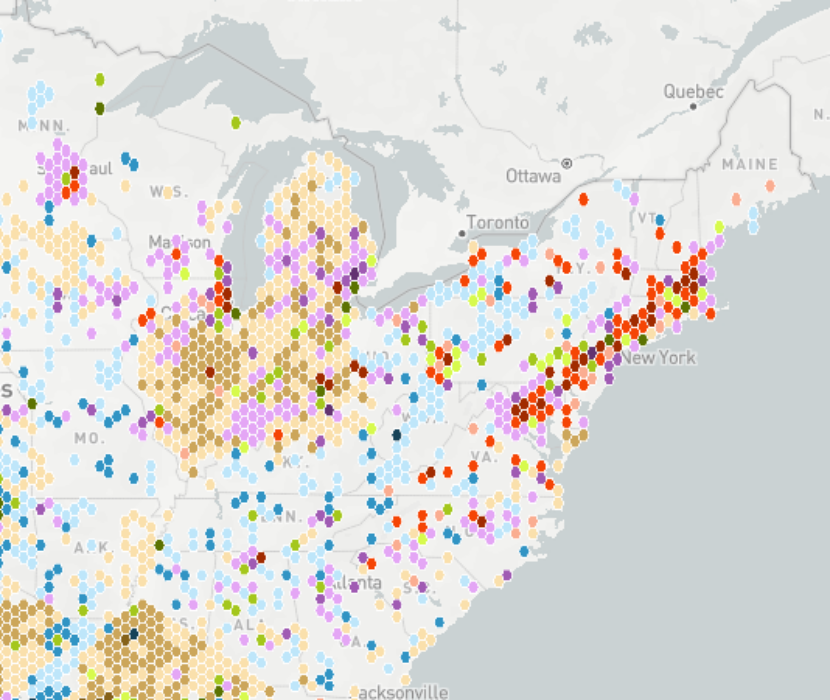Clearing the Air: A Federal RD&D Initiative and Management Plan for Carbon Dioxide Removal Technologies (September 2019) outlines a 10-year, $10.7 billion research, development, and demonstration (RD&D) initiative to bring to commercial readiness innovative carbon dioxide removal (CDR) technologies at gigaton scale with technology-specific cost targets and minimal ecological impacts. This report is the result of a 12-month study on various CDR technologies and catalyzes global dialogue on the necessity of carbon removal to reach climate targets. The study was jointly funded by the Linden Trust for Conservation and ClimateWorks Foundation.
“We need to face the reality that meeting the Paris Agreement objective of limiting global warming to below two degrees Celsius will require taking carbon out of the atmosphere at massive scale,” said Ernest Moniz, Founder and CEO of the Energy Futures Initiative (EFI). “The good news is that there are a surprisingly large number of promising pathways for CDR.”
These pathways were explored in this report. A CDR RD&D innovation portfolio is needed to further develop and understand the following:
- Technological and technologically enhanced natural pathways for carbon dioxide removal (direct air capture, carbon mineralization, coastal- and oceans-based capture, and terrestrial and biological capture)
- Two pathways for carbon disposition (geologic storage, carbon utilization)
- Two cross-cutting programs (systems analysis, large-scale demonstration projects)
As the report details, the main objectives behind drafting this RD&D initiative are to build capacity for scaling-up carbon removal technologies and to reduce the cost of such pathways. In addition to decreasing the amount of emissions created, removing those already accumulated in the atmosphere is necessary, but removal technology must be deployed cost-effectively and at a large-enough scale. CDR provides optionality and flexibility to compensate for difficult-to-decarbonize sectors and can reduce atmospheric CO2 concentrations from past emissions.
Given the interdisciplinary and far-reaching effects of the initiative, implementation requires a whole-of-government approach. The report outlines the roles, coordination, and involvement of 10 federal agencies, with the U.S. Department of Energy, the U.S. Department of Agriculture, and the National Oceanic and Atmospheric Administration (U.S. Department of Commerce) leading the major elements of the initiative.
This report provides a readily implementable framework to actionably reduce atmospheric carbon dioxide concentration. It also outlines associated opportunities for economic and job growth.
“Clearing the Air” was launched during a Climate Week NYC event hosted by the Canadian Consulate and co-sponsored by the Aspen Institute and Environmental Defense Fund. Moniz gave a keynote address and presentation on key findings, which was followed by a panel moderated by Fred Krupp (President of the Environmental Defense Fund) on the opportunities and challenges associated with developing and deploying carbon removal technologies. Panelists included Giana Amador (Carbon 180), Etosha Cave, (Opus 12), Julio Friedmann (Columbia University Center for Global Energy Policy), and Steve Oldham (Carbon Engineering). 250 people viewed the event in-person and virtually on the day of the event. Moniz also delivered a keynote address on the report at a Climate Week Hub event the following day, titled “Step Up: The Business Case for Climate Action.” These two rollout events attracted coverage in major publications, including Quartz, The Washington Post, E&E News, Axios, and Bloomberg.
In connection with the report, EFI staff briefed 45 lawmakers on the need for a robust federal RD&D initiative for CDR technologies. This included meetings with then Chairman of the Senate Committee on Energy and Natural Resources, Lisa Murkowski (R-AK), and Ranking Member Joe Manchin (D-WV) (who mentioned the briefing in The Washington Times). Senator Murkowski credited “Clearing the Air” with helping her and Senator Sinema shape the CREATE Act. EFI has highlighted the report at other events and meetings, including in an October 2019 Bipartisan Policy Center event on CDR for policymakers and their staff, and in events hosted by the Global CCS Institute and The Climate Group. Moniz and the Fred Krupp (Environmental Defense Fund) also published an opinion piece on the importance of CDR in The Hill.
Moniz Keynote Address at Climate Week
Bipartisan Policy Center Briefing on the Report
Supplemental Material
Related Content
(Share this post with others.)


